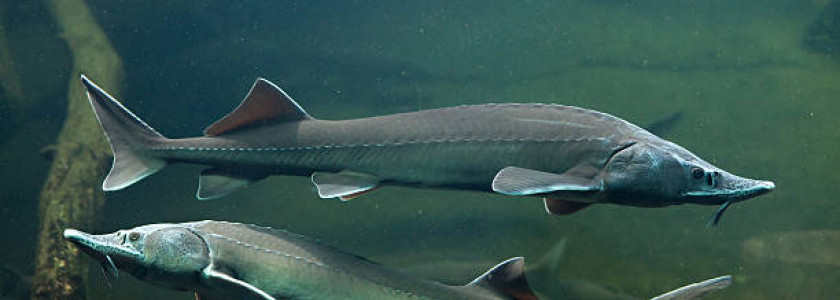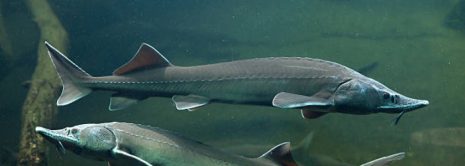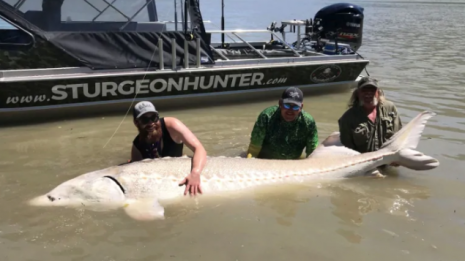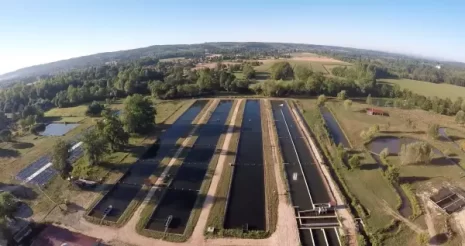
Where Does Caviar Come From?
Sturgeon Caviar
As we sell more and more caviar, we felt it interesting to write a little about various aspects of this very special luxury food as well as the wider industry!
The term caviar has nowadays been poached to include all fish eggs – salmon caviar, lumpfish (which we really do not consider caviar at all and very much a cheat product) and we have even some years ago even been offered snail caviar!
Traditionally, caviar refers to sturgeon eggs and when we talk about caviar at The Good Food Network, we mean sturgeon roe, which are by far the finest tasting of all fish eggs and a reason why caviar is so expensive and sought after.
Sturgeon – Gentle Giants From the Jurassic Era
Sturgeon are placid creatures. If you hold a sturgeon, they don’t struggle or swim away. As a result once people (traditionally around the Caspian sea area – Russia and Iran where sturgeon used to be most plentiful) discovered how good sturgeon eggs tasted, wild sturgeon stocks have, over the last century with its rising populations especially, been decimated by human fishing activity as they are so easy to catch!
Sturgeon have been around for a very long time. Apart from the fact that they look prehistoric, there are fossil remains of sturgeon dating back to some 200 million years ago. And extraordinarily, the fish has hardly changed in appearance in all that time!

Sturgeon belong to a family of fish called Acipenseridae, of which there are some 25 sub varieties, of which beluga caviar, Baerii caviar and oscietra are just a few.
Sturgeon is on the whole a large fish, and some species, notably the huso huso beluga sturgeon can reach enormous sizes and weights, with one of the records being 8 metres and around 2 tonnes. Such sizes and weights are rare nowadays as wild sturgeon were much rarer, but fish weighing in the high hundreds of kilos still exist.

Caviar are like salmon, in that they live much of their life at sea, especially in estuaries, but migrate up rivers and into lakes to reproduce and lay eggs in shallows.
Sturgeon Lifespan And Time To Reach Maturity
Sturgeon live a long time. Certainly many many decades and it’s believed to well over a century. This partly explains why farmed caviar is so expensive. For example it takes 20 years for a huso huso beluga caviar to reach reproductive maturity and they need to be fed and cared for all that time.
The time a sturgeon takes to reach maturity is a large determinant of caviar price. For example Oscietra caviar, from the Oscietra (also called Russian) sturgeon takes “only” 10-12 years to reach maturity and for that reason is less expensive than beluga.
It’s a point we feel worth drawing attention to, as we are fairly often asked “which is your best caviar” or “is beluga caviar the best caviar?” Far more important determinants of caviar quality are how the sturgeon are farmed (water quality, what they are fed with, how they cared for and how much space they have). For example the best caviar we ever tasted by a mile was a very special batch of oscietra caviar sent to our supplier Caspian Caviar by mistake, which was destined for the Arab Emirates.
The slow reproductive cycle is another reason why wild sturgeon are so rare today. With such demand for caviar, they have been fished much faster than they can reproduce.
Sturgeon Roe: True Caviar!
Real caviar is made from sturgeon eggs alone. And all other types of fish roe called “caviar” need to qualify the term with the type of fish, so “salmon caviar” for example.
Sturgeon and CITES
Sturgeon have been protected since 1998 by CITES – the Convention On International Trade Of Endangered Species – making it illegal to catch and sell wild sturgeon and caviar, following concerns that wild sturgeon stocks were dangerously low following decades of over fishing and illegal poaching.
This decline in wild populations was particularly acute in the Caspian Sea area (where most of the worlds caviar was produced) as the break up of the USSR led to the collapse of existing systems to manage wild stock levels.
Nowadays, anything derived from sturgeon (and so caviar!) that enters into international trade circuits requires the issue of CITES certificates to make it easy to trace the source of any given caviar and make sure it is not from wild.
It can be tricky to obtain these permits and we know they cause grief occasional to our supplier! The caviar farm needs to apply for an export permit, our supplier, Caspian, then need to apply for an import permit, paperwork then needs to be assembled for customs … it’s complicated!
Sturgeon Farming: Aquaculture
As a result of sturgeon being protected by CITES, all legally imported caviar sold in the UK is farmed caviar.
It may be tempting to lament the decline of wild caviar, but modern farming techniques now make it possible to enjoy excellent quality caviar at fair prices. Our House Selection Caviar is a superb example of this!
The real determinant in caviar taste and quality, will be the care and attention to detail taken by each caviar farm. For example our beluga caviar is a great example of top end caviar farming. It comes from a spring fed, out door farm in northern Italy where the attention to detail is phenomenal. The water quality, temperature, food and processing is all rigorously monitored, and the results are plain to taste.

France (Aquitaine region) and Northern Italy are two large caviar producing areas in Europe. And more recently, a UK caviar farm (Exmoor Caviar) has set up in the foothills of the Exmoor National Park, which has a convenient and abundant supply of water!
Sturgeon Re-Introduction Into The Wild
There have been numerous attempts over the last few decades aimed at at reintroducing sturgeon into the wild in their natural habitats of lakes and rivers in Europe and the USA, but for now sturgeon remain an endangered species. Even if successful, such schemes take decades to yield results.
And that ends this article! If you feel we have missed something, or you have something to add please let us know.
In the meantime we invite you to take a look at all our related caviar blog posts!
